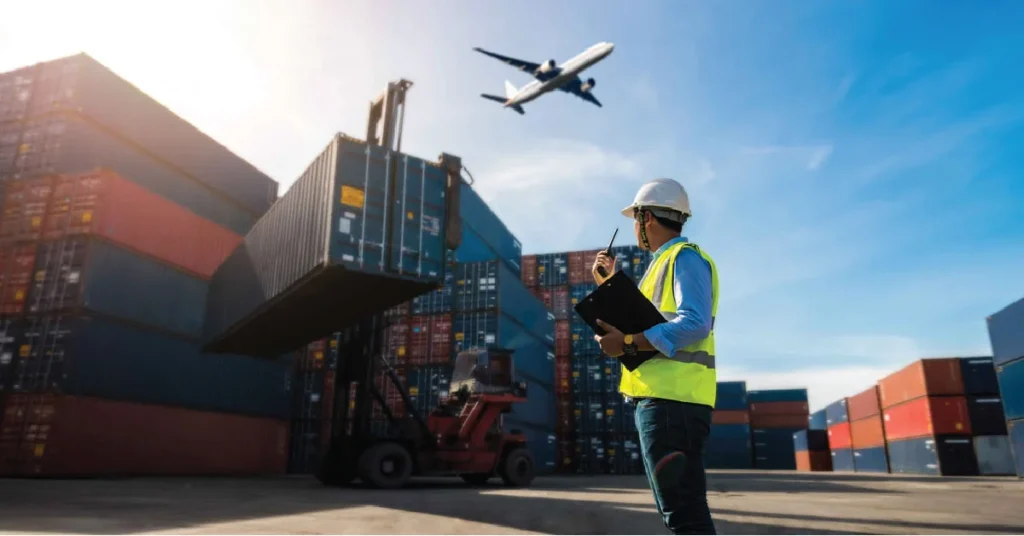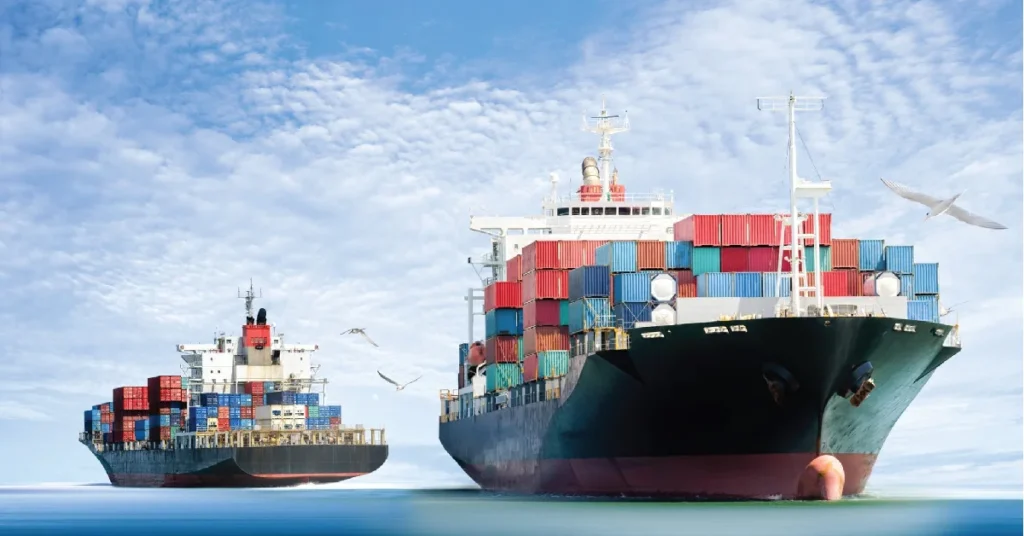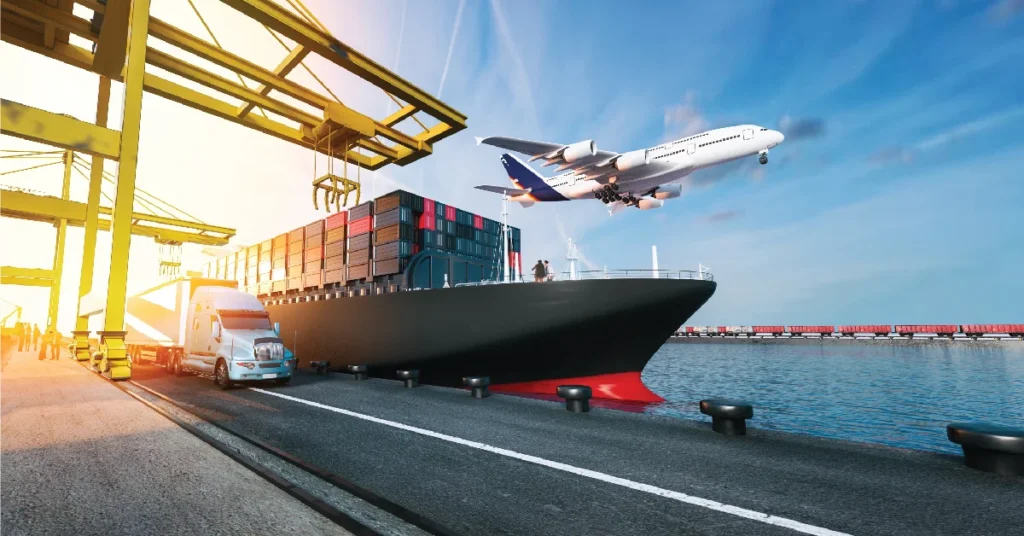Imagine a world without trucks, ships, or planes carrying goods across borders. How will businesses work, and how will consumers receive their products? This is where freight shipping steps in; it is a process that is extremely important for the global economy.
Freight shipping is the process of transporting commodities, goods, and cargo by land, sea, or air. It is basically an integral part of many e-commerce businesses’ operations, especially when international shipping is involved.
What Is Freight?

Freight is the transportation of goods in bulk via air, ship, road, or by an intermodal transport. Freight means the movement of any cargo from one place to another. It is not a parcel shipping. When an order is placed online for delivery to a specific area for a smaller packages that is parcel shipping where as freight is the shipment of larger bulks of goods.
Freight in shipping refers to the cargo that is transported from one place to another. It includes the cost of transporting these goods, packaging, loading, and delivering them to their destination. Freight can consist of anything from raw materials, bulk commodities, and sensitive products as well. It can be transported domestically or internationally as well.
In Logistics, Freight includes
- Planning
- Management (done by a Freight Forwarder)
- Coordination of the movement
- Storage of goods
- Packaging
- Warehousing
- Customs clearance
- Delivery to the final destination.
In freight shipping it is an important thing to make sure that the goods get delivered efficiently, cost-effectively, and on time.
Types of freight shipping
Freight shipping includes various types like air, sea, rail, and truck freight, each suited for different shipment sizes, distances, and delivery speeds.

1. Full Truckload (FTL) Shipping
Ideal for large shipments that can fill a full truckload. It guarantees direct shipping with external shared space. It moves bulk which is large enough to use an entire semi-trailer, that is typically more than 15,000 pounds.
2. Less Than Truckload (LTL) Shipping
It is best for smaller shipments that don’t require an entire truck. Mixing freight from multiple shippers helps reduce fees by using shared space. LTL is typically used for shipments between 150 and 15,000 pounds.
3. Intermodal Shipping
This method uses more than one mode of shipping to transport goods over long distances optimally. Including rail in your freight shipping can reduce fuel use, lower costs and offer a reliable method of shipping
4. Air Freight
Best for urgent, time-sensitive delivery. It is more expensive but it is fast and used for high-value goods.
5. Ocean Freight
It is used to ship large bulks internationally. It is a slower process and a cost-effective method for non-urgent shipments.
6. Expedited Shipping
Used for urgent deliveries that need to arrive quickly. This one has a generally steeper price but still guarantees fast delivery. Expedited freight refers to time-critical shipments.
7. Freight Rail
To transport bulky and large shipments over long distances within a country. It is an eco-friendly method which is cost-effective as well.
What classifies as a freight shipment?
Freight refers to any shipment above the following size and weight thresholds:
30 inches (inches height x width) x 30 inches x 30 inches, or 150 pounds and above. On the other hand, smaller packages may cost less for parcels in most cases.
For instance, eBay freight shipping is a service offered by eBay to facilitate the transportation of large and bulky items that cannot be shipped using standard parcels.
How does freight shipping work?

Freight shipping entails larger and heavier goods that are more cumbersome thus it’s not as straightforward as parcel shipping. Instead, it requires use of bigger infrastructures which involves loading and unloading systems, bulky transport vehicles and ports to facilitate unhindered movement of shipments.
Shippers often load the goods in trucks or in pallets. Pallets, or wooden platforms used for shipping, are typically 48” x 48” or 48” x 40”, and around 26 which can approximately fit in the average trailer. This allows a more easy, without any damage, and a convenient transportation.
Characteristics
Freight shipping includes the shipment of goods which is very different from normal parcel delivery. Freight shipping is more cost-effective and efficient. Some huge companies, like FedEx and UPS, also have freight divisions, but they operate as separate units for it and parcel delivery as well.
Anything that weighs more than 150 pounds, is longer than 108 inches, and is greater than 160 inches in length comes under the parameters of freight shipment.
Benefits of freight shipping
Freight shipping offers cost-effective, reliable solutions for transporting large quantities, enabling businesses to streamline supply chains and reach global markets.
1. Top Carriers
In case you’re transporting significant cargo, it is important to guarantee your commodities reach safely and promptly. Online freight services work hand in hand with reliable high-class carriers to achieve this.
2. Cut down on Shipping Fees:
Businesses may take a lot of time when searching for the best rates since they have to find different carriers, get quotes, and then compare the prices. However, TEU eases this process by providing you a trustworthy service at competitive rates.
3. Timely Freight
When dealing with time-sensitive shipments, it is necessary to respect tight delivery windows. Different shipping options allow you to select that particular service level that meets deadlines easily.
Challenges
- The increasing demand for skilled people is growing rapidly in the logistics industry. It is important to firm a strong team as small business operators quickly realize the need for a good team. Managing freight shipping can be tough, so having a strong team helps during peak seasons. Hiring reliable people in the team is the only solution to handle challenges more effectively.
- Having proper information about the modes of freight is really important. It gives you flexibility if you’re dealing with less-than-truckload (LTL) or full-truckload shipments. The method or mode chosen for shipment is selected according to the need. As it saves both time and money.
- Using the right tools during the shipment process is crucial. Understanding the importance of competitive shipping rates can reduce the amount of time and money. Many shippers find themselves under the rubble with rigid contracts. High rates can be overcome by booking everything in advance, so you can avoid paying more than expected.
- Incomplete bills, not classifying freight correctly, small mistakes, or being unprepared are common issues among shippers. Being prepared can help you avoid costly surcharges, delays, or even customs issues for international shipments.
- Delays in freight shipping can occur with any company. These are unavoidable because everything is not under one party’s control. For instance, one may lose their shipments’ progress, so having online tracking tools helps you to stay on top of things. To anticipate any issues that might come in the process, the shippers can work with reliable companies that have online tools that track the shipment more effectively.
Conclusion
Freight shipping is a process used worldwide now; having complete knowledge of this process is the only way one can make sure that money and time are being saved. This process can lead to challenges like building a skilled team, choosing the right shipping methods, securing competitive rates, and ensuring proper preparation and documentation. So, making the right decision and having the right people on a team can help to overcome these challenges.



